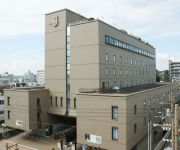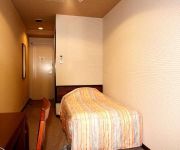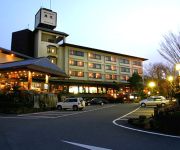Safety Score: 2,8 of 5.0 based on data from 9 authorites. Meaning we advice caution when travelling to Japan.
Travel warnings are updated daily. Source: Travel Warning Japan. Last Update: 2024-08-13 08:21:03
Explore Shijō-ōji
Shijō-ōji in Nara-shi (Nara-ken) is a city in Japan about 231 mi (or 371 km) west of Tokyo, the country's capital.
Local time in Shijō-ōji is now 06:04 PM (Friday). The local timezone is named Asia / Tokyo with an UTC offset of 9 hours. We know of 8 airports in the vicinity of Shijō-ōji, of which 3 are larger airports. The closest airport in Japan is Osaka International Airport in a distance of 22 mi (or 35 km), West. Besides the airports, there are other travel options available (check left side).
There are several Unesco world heritage sites nearby. The closest heritage site in Japan is Historic Monuments of Ancient Nara in a distance of 2 mi (or 4 km), East. If you need a place to sleep, we compiled a list of available hotels close to the map centre further down the page.
Depending on your travel schedule, you might want to pay a visit to some of the following locations: Nara-shi, Kizugawa, Yamatokoriyama, Ikoma and Tenri. To further explore this place, just scroll down and browse the available info.
Local weather forecast
Todays Local Weather Conditions & Forecast: 18°C / 64 °F
| Morning Temperature | 15°C / 59 °F |
| Evening Temperature | 18°C / 64 °F |
| Night Temperature | 16°C / 61 °F |
| Chance of rainfall | 0% |
| Air Humidity | 78% |
| Air Pressure | 1019 hPa |
| Wind Speed | Light breeze with 3 km/h (2 mph) from South-East |
| Cloud Conditions | Overcast clouds, covering 100% of sky |
| General Conditions | Light rain |
Saturday, 16th of November 2024
20°C (68 °F)
19°C (66 °F)
Overcast clouds, gentle breeze.
Sunday, 17th of November 2024
20°C (69 °F)
17°C (62 °F)
Moderate rain, gentle breeze, broken clouds.
Monday, 18th of November 2024
14°C (57 °F)
9°C (47 °F)
Light rain, moderate breeze, overcast clouds.
Hotels and Places to Stay
HOTEL NIKKO NARA
HOT FUJITA NARA
Hotel Asyl Nara Annex
Nara Washington Hotel Plaza
Hotel Hanakomichi
Toyoko Inn Kintetsu Nara Ekimae
(RYOKAN) Tsubakiso
Nara Royal Hotel
(RYOKAN) Nara Park Hotel
Onyado Nono Nara Hot Spring
Videos from this area
These are videos related to the place based on their proximity to this place.
Viajando con PDGTV - Nara, Japón / Traveling with PDGTV - Nara, Japan.
Nara, antigua capital de Japón, llena de monumentos y sorpresas maravillosas, incluyendo sus dóciles y simpáticos venados, el Buda gigante de bronce, el edificio de madera más grande del...
We took a day trip from Osaka to Nara!
While staying in Osaka, we decided to make a trip to Nara and spend an entire day there feeding deer and visiting temples. Seeing the Todai-ji Temple in person ...
Deers everywhere!! Visitando Nara
Pase la tarde en Nara, no visité todo pero si hice lo que más me interesaba. Darle de comer a los ciervos y visitar al buda colosal!!
Videos provided by Youtube are under the copyright of their owners.
Attractions and noteworthy things
Distances are based on the centre of the city/town and sightseeing location. This list contains brief abstracts about monuments, holiday activities, national parcs, museums, organisations and more from the area as well as interesting facts about the region itself. Where available, you'll find the corresponding homepage. Otherwise the related wikipedia article.
Yakushi-ji
is one of the most famous imperial and ancient Buddhist temples in Japan, located in Nara. The temple is the headquarters of the Hossō school of Japanese Buddhism. Yakushi-ji is one of the sites that are collectively inscribed as a UNESCO World Heritage Site, under the name of "Historic Monuments of Ancient Nara. " The main object of veneration, Yakushi Nyorai, also named "The Medicine Buddha", was one of first Buddhist Deities to arrive in Japan from China in 680, and gives the temple its name.
Tōshōdai-ji
Tōshōdai-ji (唐招提寺) is a Buddhist temple of the Ritsu sect in the city of Nara, in Nara Prefecture, Japan. The Classic Golden Hall, also known as the kondō, has a single story, hipped tiled roof with a seven bay wide facade. It is considered the archetype of "classical style. " It was founded by a Chinese Buddhist monk named Jianzhen during the Nara period in the year 759. Jianzhen was hired by the newly empowered clans to travel in search of funding from private aristocrats as well.
Siege of Nara
Following the 1180 Battle of the Uji, in which Minamoto no Yorimasa fought a small Taira army with the help of monks from the Mii-dera and other temples, the victorious Taira, angry at being opposed, decided to assault and burn the Miidera, before moving on to Nara. The Taira were opposed by warrior monks from nearly every major monastery and temple in Nara. Taira no Shigehira and Tomomori, both sons of Kiyomori, head of the clan, commanded the siege.
Heijō Palace
Heijō Palace in Nara, was the Imperial Palace of Japan (710-784 AD), during most of the Nara period. The Palace was located in the north end of the capital city, Heijō-kyō. The remains of the palace, and the surrounding area, was established as a UNESCO World Heritage Site in 1998 along with a number of other buildings and area, as the "Historic Monuments of Ancient Nara."
Yamato-Saidaiji Station
Yamato-Saidaiji Station is a railway station owned by Kintetsu Corporation and located in Saidaiji Kunimichō Itchōme, Nara, Japan. The station is also called Kintetsu Saidaiji Station or Saidaiji Station .
Nara National Research Institute for Cultural Properties
The Nara National Research Institute for Cultural Properties, also known by its former name, the Nara Research Institute for Cultural Properties, is one of two research institutes that comprise the National Institutes for Cultural Heritage, an independent administrative institution created in 2001.
Nishinokyō Station
Nishinokyō Station is a railway station on the Kintetsu Kashihara Line in Nara, Japan.
Heijō-kyō
Heijō-kyō (平城京, also Heizei-kyō, sometimes Nara no miyako), was the capital city of Japan during most of the Nara period, from 710–40 and again from 745–84. The Palace site is a listed UNESCO World Heritage together with other places in the city of Nara. Empress Gemmei ordered the Imperial capital moved from Fujiwara-kyō to Heijō-kyō in 708, and the move to Heijō-kyō was complete in 710. Heijō-kyō was modeled after Chang'an, the capital of Tang Dynasty China, although Heijō-kyō lacked walls.
Daian-ji
Daian-ji was founded during the Asuka period and is one of the Seven Great Temples of Nara, Japan.
Amagatsuji Station
Amagatsuji Station is a railway station on the Kintetsu Kashihara Line in the city of Nara, Japan.
Shin-Ōmiya Station
Shin-Ōmiya Station (新大宮駅) is a railway station on the Kintetsu Nara Line, located in the city of Nara, Nara Prefecture, Japan.
Hokke-ji
, is a Buddhist temple located in the city of Nara, Japan. Hokke-ji was built by Empress Kōmyō in 745, originally as a nunnery temple on the grounds where previously her father Fujiwara no Fuhito's mansion stood. According to records kept by the temple, the initial construction went on until around 782. The temple once had a large complex with several halls and gates, and two pagodas. Hokke-ji was heavily damaged in the fierce Siege of Nara, in 1180.




















!['On the train [Nara]' preview picture of video 'On the train [Nara]'](https://img.youtube.com/vi/Cx531X1A00U/mqdefault.jpg)



